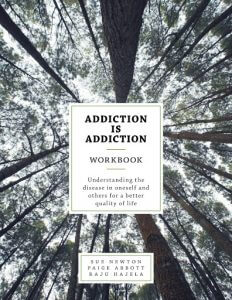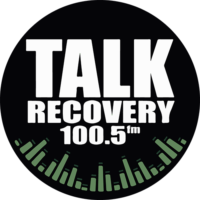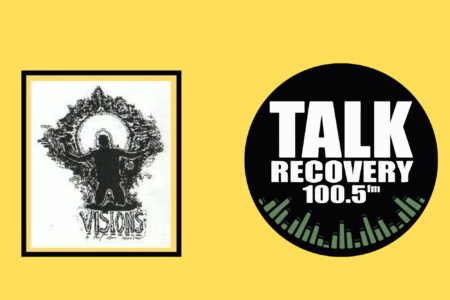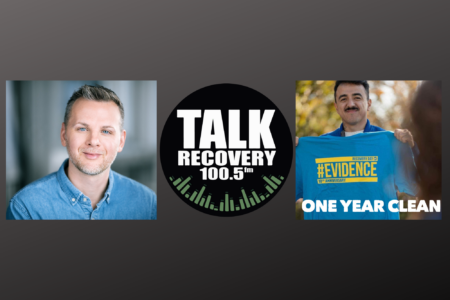Addiction is Addiction
Talk Recovery RadioTalk Recovery Radio airs every Thursday on 100.5 fm in Vancouver from 12 pm to 1 pm, hundreds of shows over 6 years. Bringing addiction recovery issues to the airways. Powered by Last Door Recovery Society
Replay the show:
Addiction Book
This book looks at how treating Addiction as a disease can radically improve outcomes by using a holistic approach that balances the biological, psychological, social, and spiritual aspects of treatment needed for recovery. Whether you suffer from Addiction, know someone who does, or work in the healthcare field, Addiction is Addiction provides a comprehensive path to understanding, living with, and recovering from the disease.
Buy Your Copy Now and learn more about addiction recovery treatment.
Addiction is Addiction with Dr. Raju Hajela
Book review By Eric Fisher, BSc, MSc, CCC, Health Upwardly Mobile

The book begins with an introduction to make it clear that the purpose of the writing was to assist people in becoming more aware and understanding Addiction as a disease, not merely a moral failing or a personal weakness. Brief summaries of each upcoming chapter are given in the section. There is even an Addiction self-test at the end of the introductory portion.
The first chapter is about understanding the disease of Addiction, which includes areas of the brain impacted by the disease. A primary topic discussed is answering the question as to why Addiction is seen as a disease, as well as information about tolerance and withdrawal. Certain factors that contribute to the manifestation of Addiction as outlined by ASAM (American Society of Addiction Medicine) are present. Again, simplicity is noted in five different facets that characterize the disease, which are “the inability to consistently abstain, impairment in behavioral control, craving or increased hunger for drugs or rewarding experiences, diminished recognition of significant problems with one’s behaviors and interpersonal relationships, and a dysfunctional emotional response” (p. 13-14). These five facets are described in detail. Depression and trauma are also discussed in how they are associated with Addiction.
Chapter two discuses the historical narrative of Addiction and the roots of the definition of Addiction as documented by ASAM. The first sentence of ASAM’s definition of addiction states “Addiction is a primary, chronic disease of brain reward, motivation, memory, and related circuitry” (p. 30). Different case histories are brought up with each case highlighting at least one of the five characteristics of Addiction, such as the inability to consistently abstain.
Chapter three discusses the features of addictive thinking. The chapter starts with talking about addictive thinking in a general sense. The information then moves into specific features of addictive thinking, such as all-or-nothing thinking, rationalization, denial, projection and minimization. The Johari Window, journaling, and healthy self-talk are emphasized as important recovery tools. One key mention is a fact often overlooked in treatment circles: addictive thinking comes before addictive behaviors and relapse. The need for a strong spiritual connection in recovery is stressed.
Chapter four emphasizes addictive feeling concerning Addiction. The distinction is made in the text between feelings and emotions. It is keenly noted that feelings are neither good nor bad, but it is important in recovery to learn how to process feelings in a healthy manner. Guilt, shame, anger, pride, resentment, pain, grandiosity, minimization, and exaggeration are explored in depth. Recovery tools are given for processing the feelings in a healthy manner.
The main thrust of chapter five is on addictive behavior. The issues that arise due to intoxication, withdrawal and medical complications are addressed with reference to specific substances. An important element in the chapter is understanding the behavioral aspects of Addiction in connection to manifestations such as gambling, relationships, eating and sexual disorders. The significance of the environment, exposure to a substance, and stress concerning relapse is discussed. Also, “The Pickle Line” analogy for the Addiction continuum manifesting in substances and/or relationships is brought up in the chapter.
Chapter six focuses on holistic recovery from a bio-psycho-social-spiritual standpoint. The stages of change model is emphasized. The concepts of willingness and goal setting are heavily detailed in connection to holistic recovery. Examples of recovery tools are laid out. Towards the end of the chapter, knowledge about Post-Acute Withdrawal Syndrome (PAWS) is presented.
The family members of those in recovery are given primary notice in chapter seven. The chapter speaks about the importance of healthy boundaries in the family system. The different roles family members play, such as the scapegoat or the wallflower, are presented. There is also information on verbal and non-verbal communication with a clear importance given to the latter. The chapter goes into depth on the emotional healing journey a family member will go through as their loved one undergoes recovery, and this entails processing emotions such as fear and resentment. The chapter indeed stresses Addiction as a family disease and will affect all members of the family in some form or fashion.
Chapter eight is mainly for healthcare professionals and addresses concerns in the domain of understanding the need for individualized treatment plans for those undergoing treatment for the disease of Addiction. Information on assessment, as well as issues that may arise with assessment of individuals coming into treatment, are outlined. The different modes of treatment (outpatient, residential, etc.) are brought forth, as are the barriers to treatment for individuals, such as a person having to pay out of pocket to achieve quality care. A futuristic outlook in the coming years on the treatment of Addiction is written in a succinct and coherent fashion.
The final chapter before the end notes and glossary is a summary and conclusion for the entire book. The summaries of the chapters above do not scratch the surface for the information contained in each chapter. It is worthwhile to read through each chapter, even the history of Addiction treatment and the its definition in the second chapter. There is no filler information in the material; everything has a worthwhile reason for being present in the book.
Addiction Is Addiction incorporates a holistic strategy for understanding the disease of Addiction as well as the need for individual recovery to be active on the bio-psycho-social-spiritual dimensions. Some may find the information in the book too technical in its terms, but this is indeed a disease with its own language and definitions. I humbly recommend both the layperson and professional to read the book with transparency and without bias. Research into the field of Addiction is ongoing, and this book is a stepping stone in the right direction for understanding more so the assessment and treatment of those with Addiction, as well as the treatment parameters for their family members.
Above all, the book notes the biological evidence for Addiction in different circuits within the brain. As treatment providers, it would be a wise choice to start looking at Addiction as an all-encompassing disease which manifests in different ways (substance, spending, sexually, etc.) rather than trying to treat an individual until sobriety is reached from a substance. In conclusion, there is more to Addiction than abstinence from a substance as the bio-psycho-social-spiritual recovery framework clearly indicates with tools addressing addictive thinking, feeling, and behaviors.
http://www.addictionisaddictionbook.com/
Archive of all shows can be found here www.TalkRecoveryRadio.com
Listen and Subscribe
Talk Recovery airs live every Thursday at noon on 100.5 FM, Vancouver Coop Radio. The Last Door produces this weekly radio show discussing the many pathways to addiction recovery. To end stigma we must continue to talk about recovery. Talk Recovery is in its 7th Season, Hundreds of guests, thousands of listeners, thank you. Show ideas? Email community@lastdoor.org
Powered by #NewWestRecovery












